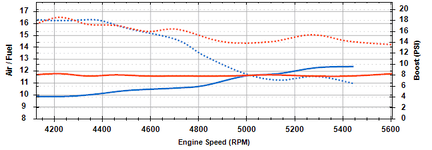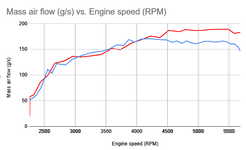Hi Folks,
I’ve combed the internet, both this forum and others, for any real data on power increases with bolt ons and tuning/ecu solutions for CX-5 turbo. Pretty much only found info on JB4, which seems like it has mixed results and consistency. Saw some impressive dyno results but not corroborated by other buyers - just one example with a solid dyno but other anecdotes suggest inconsistency. My goal is to increase power past 4k RPMs where it seems to fall off quite a bit.
My question is does anyone have valid data on actual improvements in power with full bolt ons and/or tunes/piggybacks/flashes? Dyno results? Based on what I’ve read, doesn’t sound like bolts ons do much without a tune (unsurprising). 91 octane seems to help on the margin, but not by much. Could just be placebo effect quite honestly, though I know Mazda advertises 20-30 hp with premium. No 93 octane here in CO
I’d really like a bit more pull to red line and am wondering if anyone has gotten a custom tune and seen results. I’d be thrilled with an extra 30-50 hp. Seems like that would be a substantial but responsible increase in power with the right setup (ie not blow up turbo/internals). I suspect that would require both a custom tune and addressing power bottlenecks whether those are intercooler, exhaust, intake etc. I know Corksport and others claim significant gains with exhaust, intercooler etc but no one seems to have dynos to back that up outside what the company publishes. Also heard the quality of their intercooler core is inferior to stock.
Anyway, what insight do you all have? Thanks in advance.
I’ve combed the internet, both this forum and others, for any real data on power increases with bolt ons and tuning/ecu solutions for CX-5 turbo. Pretty much only found info on JB4, which seems like it has mixed results and consistency. Saw some impressive dyno results but not corroborated by other buyers - just one example with a solid dyno but other anecdotes suggest inconsistency. My goal is to increase power past 4k RPMs where it seems to fall off quite a bit.
My question is does anyone have valid data on actual improvements in power with full bolt ons and/or tunes/piggybacks/flashes? Dyno results? Based on what I’ve read, doesn’t sound like bolts ons do much without a tune (unsurprising). 91 octane seems to help on the margin, but not by much. Could just be placebo effect quite honestly, though I know Mazda advertises 20-30 hp with premium. No 93 octane here in CO
I’d really like a bit more pull to red line and am wondering if anyone has gotten a custom tune and seen results. I’d be thrilled with an extra 30-50 hp. Seems like that would be a substantial but responsible increase in power with the right setup (ie not blow up turbo/internals). I suspect that would require both a custom tune and addressing power bottlenecks whether those are intercooler, exhaust, intake etc. I know Corksport and others claim significant gains with exhaust, intercooler etc but no one seems to have dynos to back that up outside what the company publishes. Also heard the quality of their intercooler core is inferior to stock.
Anyway, what insight do you all have? Thanks in advance.


